
The painting "Herodias" by Ivan Nikolaevich Kramskoi is a moment of terrifying realization instead of the triumph of victory over the enemy
"Herodias" is a painting by Ivan Nikolaevich Kramskoi, inspired by an event from the New Testament. The Gospel describes a real historical character, a princess from the Herodian dynasty. The heroine of the painting was married to her step-uncle but divorced him and married his brother, King Herod Antipas. According to Jewish traditions, such an act while the spouse is still alive was considered a crime. John the Baptist openly rebuked the ruler for breaking the law, which angered the headstrong woman. She persuaded her adult daughter Salome, who pleased the king with her dancing, to ask him for the head of her stepfather as a reward. The young girl did so and then presented the "gift" to her mother.
Before us is a plump woman with a beautiful but stern face. She sits, embracing herself with her hands, and gazes intently at a horrifying object. Her posture suggests discomfort. The malicious joy has faded, replaced by numbness. But is there any remorse in her? The time to pay for her sins will come soon, but what has she done? She made her own child beg for the execution of an innocent man.
Kramskoi draws attention to the characters of the painting by manipulating the color palette, which is characteristic of his work. The black hair of Herodias and John, along with the dark background, form a diagonal line, separating the upper right corner. It seems as though darkness descends from there. The dominant tones around the heroine are crimson: the stain near her left elbow, the carpet beneath her feet. Even the boots and the lower layers of clothing that show through the semi-transparent dress are red, as if mystically indicating the shed innocent blood.
On the left, there is a bluish lifeless light, and on the right, where the head of the executed man is, a golden radiance. Every brushstroke makes one feel the tension of the scene. Nothing is happening, everything has already been done, but it only makes it more dreadful.
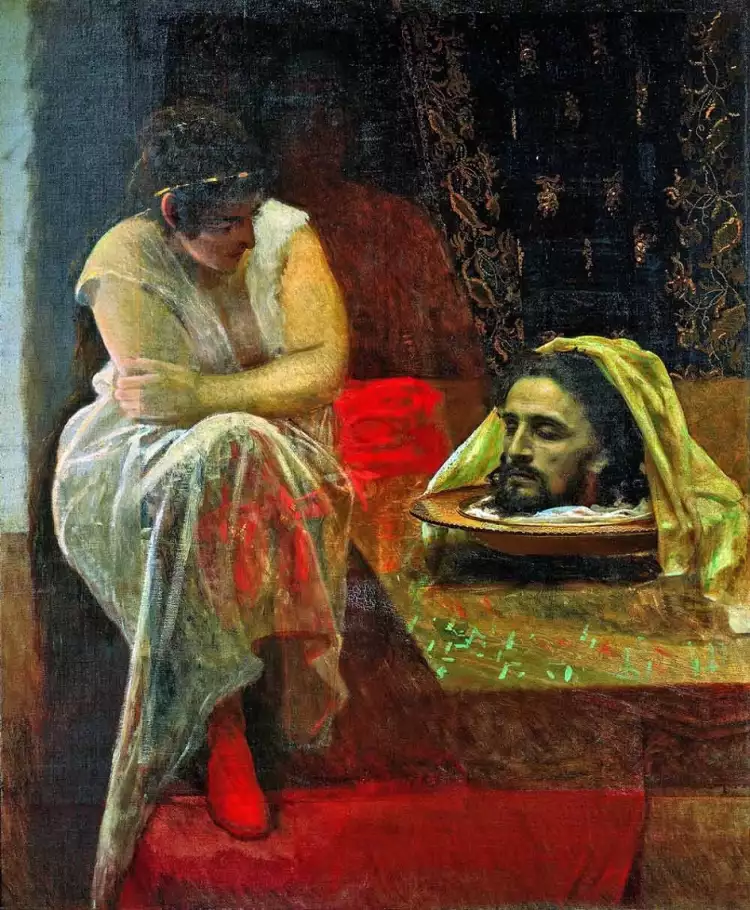 Ivan Kramskoi. Herodias, 1884-1886
Ivan Kramskoi. Herodias, 1884-1886
- Title of the painting: "Herodias" (Russian: «Иродиада»).
- Artist: Ivan Nikolaevich Kramskoi (Russian: Ива́н Никола́евич Крамско́й) (1837-1887).
- Year of creation: 1884-1886.
- Size: 142 x 118 cm.
- Style: Realism, Mysticism.
- Genre: Religious, Historical.
- Technique: Oil painting.
- Material: Canvas.
- Location: State Tretyakov Gallery, Moscow, Russia.
Ivan Nikolaevich Kramskoi was a Russian artist, a remarkable portraitist of the 19th century, who sought to give each character a vivid and profound personality. "Herodias" is considered his unfinished work, but it is typical of the master's style. The silhouette that appears behind the heroine raises many questions. Whether it holds any meaning or is a remnant of a previous sketch on the canvas is unknown.
Inclined towards impressionistic representation of emotions in his painting, the author created an image of a woman who succumbed to passion but was struck by the realization of her own actions. By her whim, a person who had earned the love and respect of his fellow citizens was executed for speaking the truth.
The painting "Herodias" by Ivan Nikolaevich Kramskoi is often perceived as his confession before death. It conveys a challenging truth to the viewer: one can remain alive but with a dead soul, or one can die and preserve a living, undefeated spirit. After the artist's untimely demise, his work found a worthy place in the collection of the Tretyakov Gallery, where it can still be seen to this day.
 Design is a captivating process of artistic planning
Design is a captivating process of artistic planning  The painting "In the Orchard" by Laura Knight is a joyful hymn to the sun and summer
The painting "In the Orchard" by Laura Knight is a joyful hymn to the sun and summer  Animalism is a popular genre in painting from prehistoric times
Animalism is a popular genre in painting from prehistoric times 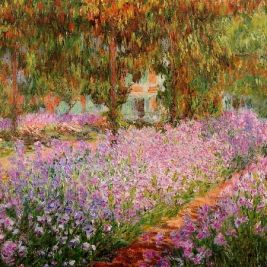 Impressionism in painting, or The Catchers of the Beautiful Moment
Impressionism in painting, or The Catchers of the Beautiful Moment  The Rise of Generative Art: Bridging Technology and Creativity
The Rise of Generative Art: Bridging Technology and Creativity  The painting "Bay of Naples" by Ivan Konstantinovich Aivazovsky is an invitation to immerse yourself in the serene beauty of a southern evening
The painting "Bay of Naples" by Ivan Konstantinovich Aivazovsky is an invitation to immerse yourself in the serene beauty of a southern evening 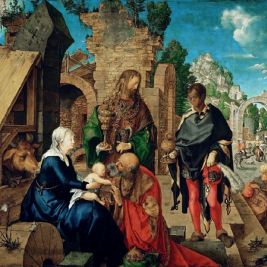 Art: its essence, types, genres, and history
Art: its essence, types, genres, and history 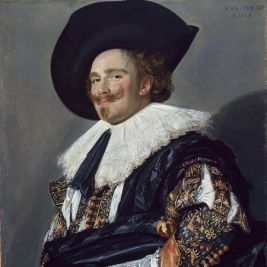 Portrait - a genre of painting: essence, types, history of the genre, famous portraits and portrait artists
Portrait - a genre of painting: essence, types, history of the genre, famous portraits and portrait artists 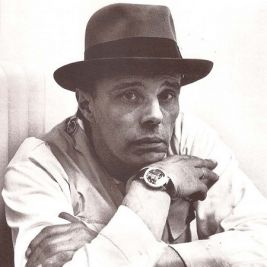 Joseph Beuys - Biography and "shamanic," mystical works of a great master
Joseph Beuys - Biography and "shamanic," mystical works of a great master  The painting "The Umbrellas" by Pierre-Auguste Renoir is a masterfully created illusion of black color
The painting "The Umbrellas" by Pierre-Auguste Renoir is a masterfully created illusion of black color